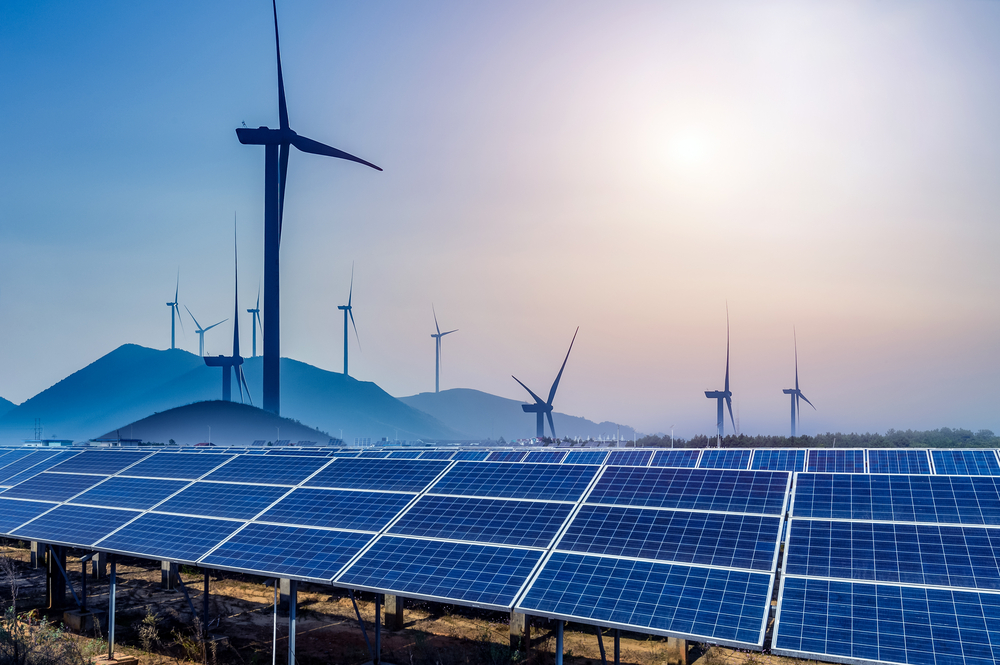Air emissions report shows zero-carbon energy sources leading coal and gas for first time

For the first time ever, zero-carbon energy sources have surpassed coal and gas alike, according to a recent analysis of the biggest electric power producers in America.
The Benchmarking Air Emissions of the 100 Largest Electric Power Producers in the United States analysis, a collaboration between Ceres, Entergy Corp., Exelon Corp., the Natural Resources Defense Council (NRDC) and Bank of America, found that in 2017, these zero-carbon sources of electricity generation made up 35.4 percent of the market, followed by gas at 32.1 percent, and coal trailing behind at 29.8 percent. The data was pulled from the U.S. Energy Information Administration and the U.S. Environmental Protection Agency.
“It’s encouraging to see so many of the largest power producers in the U.S. pivot toward lower-carbon and zero-carbon solutions,” Dan Bakal, senior director of electric power at Ceres, said.
For supporters of going green, it’s news to take to heart: a sign that air pollutant emissions are being willingly cut, along with their contributions to climate change. Renewable resources such as wind and solar are especially on the rise, having increased to 8 percent of power produced in the United States in 2017 from 6.9 percent in 2016. That said, nuclear still dominates the zero-carbon market, responsible for generating 56.3 percent of that power in 2017. Another 22.6 percent came from renewables and 21.1 percent from hydropower.
Exelon was at the forefront of the zero-carbon electricity space, responsible for 171.5 megawatt-hours (MWh). Its nearest competitor in that space was NextEra Energy, which produced 93.9 MWh over the same period.
“Exelon is the nation’s largest producer of zero-carbon power and we remain on track to further cut our GHG emissions by 15 percent by 2022,” Kathleen Barrón, senior vice president for government and regulatory affairs and public policy at Exelon, told Daily Energy Insider. “However, truly addressing the global climate crisis requires that the U.S. energy industry and policymakers consider every option; including placing a meaningful limit on carbon emissions; preserving zero-carbon nuclear power plants; deploying renewables and developing cost-effective carbon capture and storage solutions.”
Entergy, meanwhile, has set a goal of reducing by 2030 its emission intensity by half the level it was in 2000.
“Entergy’s leadership in strategic, voluntary actions to reduce emissions since 2001 have helped drive the significant U.S. emissions reductions shared in this analysis,” said Chuck Barlow, Entergy Corporation vice president of Sustainability and Environmental Policy. “As outlined in Entergy’s new climate report, now we are taking further steps to transform our generation portfolio to cleaner resources, retain our utility-owned nuclear assets and partner with other industries on innovative electrification opportunities.”
PSEG, whose Salem and Hope Creek nuclear plants produce more than 90 percent of New Jersey’s carbon-free electricity, also ranks among the top quartile for zero-carbon generation.
“PSEG has long recognized the need to change and adapt to mitigate the impacts of climate change while providing universal access to safe, reliable and increasingly cleaner and more efficient electricity,” Chairman, President & CEO Ralph Izzo said. “And as we look toward a lower carbon future, common sense and economics dictate that energy efficiency and innovative new business models will play increasing roles, areas in which PSEG is determined to participate and thrive.”
In 2018, PSEG set a goal of eliminating 13 million metric tons of CO2-equivalent by 2030 from 2005 levels.
The analysis, meanwhile, found that carbon emissions from the electric power sector rose a slight 1 percent between 2017 and 2018, a departure from previous years, which saw a 20 percent decrease in carbon emissions since 2005.
In addition, generation from renewables has doubled since 2005 to take a 9 percent share of the U.S. total in 2018, the report noted, due in part to many states having adopted renewable portfolio standards and renewable energy goals.
“As harmful emissions from the U.S. power sector continue to decline, it’s clear that policy solutions, market forces, company leadership, and stakeholder engagement are successfully driving the clean energy transition,” Starla Yeh, director of the Policy Analysis Group of the Climate and Clean Energy program at NRDC, said. “However, the sector must ensure it recovers the ground it lost in 2018 with consistent and steep reductions in climate and air pollution over the coming decades in order to do its part in meeting domestic and global decarbonization goals.”
The report identifies the groundwork necessary for reducing carbon emissions by 2050. Given that the analysis found the national gross domestic product has grown by 41 percent over the 14 years of carbon reduction, it also means this can likely be achieved without damage to the economy.
